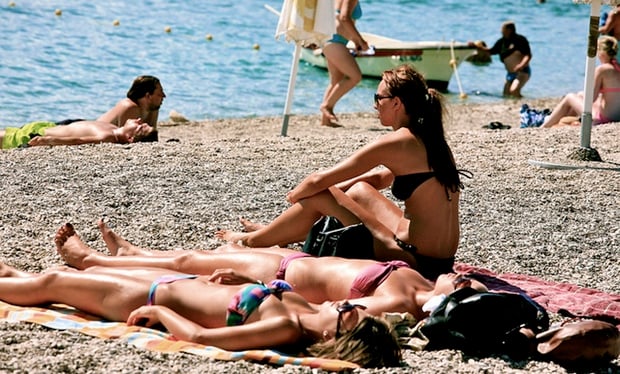Last week, the CDC reported a decrease of cancer deaths from 2004 to 2008, but it also noted a rise in melanoma among both men and women. Now, results from a new study suggest that the incidence rates for skin cancer have increased at an alarming rate among young adults.
Researcher Dr. Jerry D. Brewer and his team followed patients ages 18 to 39 from 1970 to 2009. Among this population, they found that the incidence of melanoma increased eight-fold among young females and four-fold among young men.
“The study is significant [. . .] for a number of reasons,” says Brewer. “Melanoma is a cancer that doesn’t respect age, and it happens in young people as often as it happens in old people. In this case, it happens even more often in young women compared with other groups of people.”
While melanoma is more common among men, the researchers found that the rates among women were greater over the 39-year period because “young women are more likely than young men to participate in activities that increase the risk of melanoma, including voluntary exposure to sunlamps.”
In other words, more and more young females are using indoor tanning beds these days. “There are a lot of other things that have been found to be a factor in melanoma development,” Brewer says, “but tanning bed use is probably a big one.”
Another surprising finding was that the location of melanoma among young adults differed between sexes, researchers reported. The cancer was most prevalent on lower extremities among females, and on the back among males.
Despite the troubling rates, the results do present some good news: Although more people are getting diagnosed with melanoma, survival rates have increased. This is due to the fact that the incidence of advanced-stage melanoma has decreased in the past decade. However, the researchers note that these results are not representative of the entire US population; death rates from melanoma could be down in this area because it is a largely white, highly educated population with easy access to health-care services.
Still, even though there have been various health campaigns aimed at decreasing excessive exposure to UV light, researchers say more intervention and education is needed. For now, Brewer says to follow these tips to reduce one’s risk of getting melanoma:
“Don’t go to tanning beds, look at your skin, and see a dermatologist. That could save your life.”
To read the full study, click here.



















